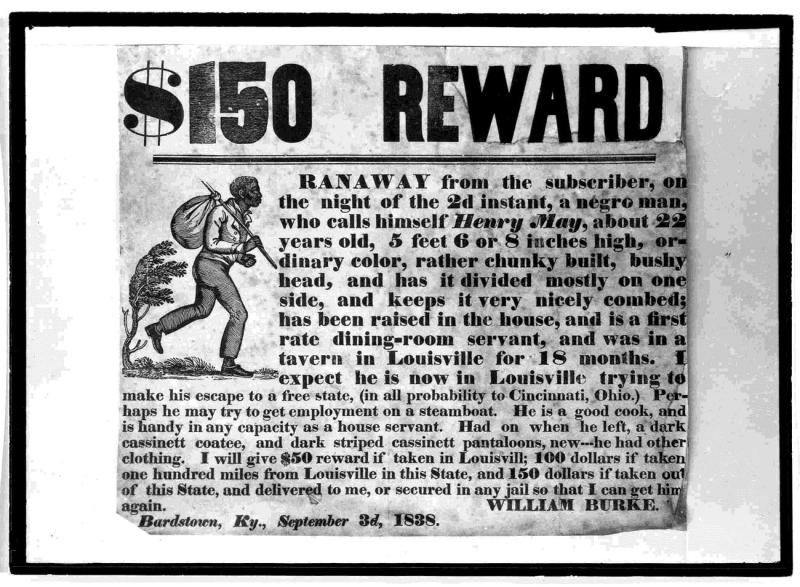Lesson Plan
Created by Elizabeth Bowens.

Core Theme:
Peopling the New World: African American History
Grade Level:
4
Estimated duration of lesson:
50 minutes
The content standard or standards that the lesson fulfills:
Ohio Social Studies Academic Content Standards
People in Societies 3-5
- Benchmark A: Compare practices and products of North American cultural groups.
- Grade 4, GLI 1: Describe the cultural practices and products of various groups who have settled in Ohio over time: e. African-Americans.
- Benchmark B: Explain the reasons people from various cultural groups came to North American and the consequences of their interactions with each other.
Primary Source(s) used:
Source 1: $150 Reward Poster for a runaway slave belonging to William Burke, Bardstown, KY, 1838. Library of Congress
Source 2: Narrative written by slave Solomon Northup, 1853. From Northrup, Twelve Years a Slave (1853).
A summary of the lesson:
After an introduction to slavery in the 1800’s and the role Ohio played in this issue, students will analyze two primary source documents from two very different people. One will be a reward poster written by a slave owner and the other will be a narrative written by a 12 year-old slave. Students will compare the two sources focusing on the intended purpose for the source, the clues it gives about living in this time period, and what the author’s point of view is concerning slavery. Students will also contrast the information they learn from these sources with what their lives are like today.
Instructional steps:
Begin the lesson by reviewing with students what life was like as a slave in the 1800’s in the United States. Review Ohio’s roles relating to slavery. Remind them that many people in our country at this time had very different views about slavery. Tell students that today they will investigate two primary source documents relating to slavery. Stress that they will need to consider how the author‘s point of view on slavery is told through the document. Divide students into groups of two. Distribute a copy of the Slavery Primary Source document to each student and a double-sided copy of the Slave Analysis Worksheet. Students will work with their partner to answer and discuss the questions on the worksheet. The teacher will float around the room assisting and redirecting students as needed. Once the majority of the class has finished the analysis worksheets we will come back together as a whole group to discuss our findings. Discuss with students how evaluating points of views can help us better understand the validity of sources we gather. As well as how using a variety of sources from many different points of view can help develop a better understanding of the past.
Worksheets:
A post-assessment:
Class discussion and participation will be used as an informal post-assessment.
List any materials needed by teachers
- Slavery Source Analysis Worksheet – double-sided copy for each student.
- Slavery Primary Source Document – one copy for each student.
List any materials needed by students
Pencil
